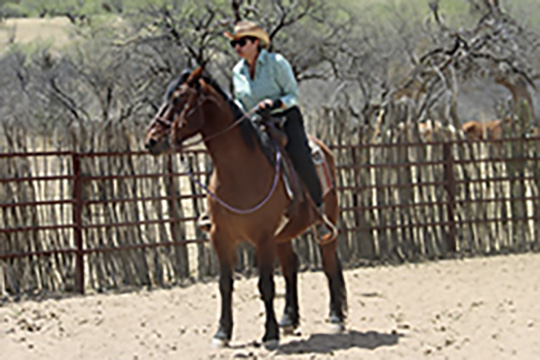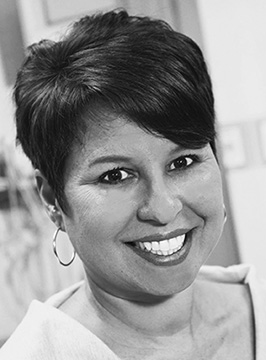The INACSL president gives us a peek inside her world. Cruciverbalist, lifelong learner, she thinks the greatest heights in her professional life are still yet to come.
It’s time to get to know Laura Gonzalez. She started as an emergency room nurse in a trauma center, spent 20 years there, and now is vice president of the company leader in Virtual Nursing Simulation. Recognized by the prestigious American Academy of Nurses as a Fellow (FAAN), she is currently President of the INACSL. Healthcare simulation educator with several articles in peer-reviewed journals, one clinical skills textbook, and a patent on Virtual Patient to her credits. At the same time, she is an avid reader and cruciverbalist, and loves doing anything outdoors. We met her and discovered that she hates needles and is still practicing telling jokes.
Ciao Laura, it’s funny to catch up with you like this. Congrats on everything you are doing and what you achieved. And, thank you for accepting our invitation.
1. SZ: What motivated you when you first decided to pursue a career as a simulationist?
As a nurse educator, I quickly realized there needed to be a more engaging way to teach nursing. For far too long nursing education has been a passive experience. As an early adopter, I glommed onto this manikin in the lab and told myself: this is what is needed and it will be fun! My story is not so different from many in healthcare; I was driven by a desire to facilitate learning in a safe environment. I see simulation as a way to engage learners and prepare them for safe patient care.
2. SZ: Who were your earliest mentors, in the field of simulation?
I have been in simulation for a very long time, since early 2000, at that time “my mentors” were just coming up themselves so for many of us, it was an on-the-job role, built by learning and making mistakes as we went along. For quite a while the manufacturers led the charge on how to use a manikin in healthcare education. Soon enough healthcare educators and nurses started stepping back to understand why this works so well, and why it is valuable. From there best practices started to surface. Now we have a field of experts who have paved the way for new simulationists. I would consider Pamela Jeffries and Suzan Kardong Edgren as my mentors. It was Dr. Jeffries who encouraged me to pursue my passion, which was avant-garde at the time, and not to be a follower. Dr. Kardong-Edgren is one of my mentors who inspires me daily.

3. SZ: If you were a simulation device, which would you like to be and why?
Well, I can tell you what I wouldn’t want to be, an intravenous task trainer… I hate needles and the thought of learners sticking me daily sends a shudder down my spine. I would be a standardized patient because I love to act and be part of the learning experience in a very human way. After that, I’d be a torso, where learners can practice heart and lung sounds. Seeing the face of a learner when they recognize a heart murmur or respiratory wheeze is so gratifying.
4. SZ: Your most memorable experience was…
One of my most memorable experiences in simulation was early on at my university. We had an old METI, we used him to teach our students Code Blue or cardiac arrest management. It was probably the highlight of the semester and students looked forward to it. We spent the entire day going over basic life support, head positioning, airway management, and CPR culminating in running a mock code. The debriefing was always very energetic with lots of dialogue and reflection. Not even two days later a student came to me very excited and shared she was involved in a Code Blue during her clinical rotation and because of what she learned in simulation she was able to immediately start BLS and save a life. That is the value of simulation: the ability to transfer knowledge to the clinical setting.
5. SZ: Do you feel you have now reached the greatest heights in your professional life?
I have been fortunate in my professional nursing career. I have truly been able to do everything I have wanted to do. I started as an emergency room nurse in a trauma center, from early on I was an adrenaline junkie, but I also liked to teach and encourage new nurses. I was inspired early on by some amazing nurses and I felt a need to pay it forward. I practiced as an advanced practice nurse in transplant and minor trauma, moving into management before I found my way to the university where I spent 20 years. My discovery of simulation has propelled my career, it has allowed me to do research and share findings internationally. I have worked with some amazing colleagues and because of simulation, I was able to develop relationships with computer scientists. It was during this time I was introduced to AR/XR and virtual simulation. This work was pivotal to my career. I am an advanced certified healthcare simulationist, and certified nurse educator. I was inducted into the Academy of Nurse Educators and a Fellow of the prestigious Academy of Nurses. I have been an active member of INACSL, starting in committee work, I was vice president of Programs for two terms and now I am the President of INACSL. So in summary: no, I haven’t reached the greatest heights in my professional life. Who knows what is next… I never thought I would be a Vice President for content development at SentinelU® for simulation software, but here I am.
6. SZ: The Covid-19 pandemic ran over the world and changed practically everything. How did it change you?
The pandemic was life-changing for all of us. I believe it made us stronger, more creative, and more thoughtful. There is no shortage of stories of nursing educators looking for ways to ensure learning occurred. It propelled VR and AR forward. It forced us to recognize alternative ways of learning. I, for one, was able to do a research study during that time, demonstrating the value of remote learning. Many of us took advantage of a terrible period in our lifetimes and moved simulation forward. Now that we are here, there is no going back to the old ways. Let’s capitalize on what we learned. In the end, I decided to leave academia for a fully remote position, that is how the pandemic changed me.
7. SZ: Nursing is a challenging and rewarding career. Why did you choose to invest your time in leading an international association? What keeps you inspired and focused to spend your efforts every day?
I am a lifelong learner and I am continuously looking for opportunities to improve my job. INACSL for me has always been the place to go, in order to learn from like-minded individuals. With time I found I looked forward to the yearly conference. It was an occasion to catch up with colleagues and network. I have made lasting friendships because of my involvement in INACSL. As with anything, if you believe in the mission and vision it is easy to invest time to ensure its success. Membership is the backbone of any successful organization and the members of INACSL inspire me and keep me focused. The INACSL work on the Healthcare Simulation Standards of Best Practice is required reading for any simulationist. In other words, we do important work. As an elected official I strive to represent the membership. I am always surprised how many people are new to simulation and rely on INACSL for evidence-based recommendations and best practices. I encourage all members to step up and consider a leadership role.
8. SZ: What does a typical day look like for an INACSL President?
As President of INACSL, I am required to represent INACSL. This means attending weekly meetings and presiding over monthly meetings with the board. We have many committees doing the work of INACSL, I need to stay abreast of topics for consideration. INACSL has numerous regional interest groups that I must stay in communication with. I meet individually with the board of directors, to ensure our work is aligned with the mission and vision. I provide a monthly president’s message and, when possible, I travel when invited to speak on behalf of the organization. Another responsibility is the ongoing communication with our affiliates. It is important to recognize others for their contribution to the science of simulation. The simulation community is a very tight-knit one, that thrives when we collaborate. A large part of my responsibility is working with the executive director of INACSL. This individual is integral to the work of the board.

9. SZ: What are your values? How have you embedded them into INACSL culture for a lasting legacy?
Some time ago I was trained in Debriefing for Good Judgement (Rudolph et al.), and one of the tenets is Advocacy/Inquiry. This philosophy has changed the way I see people and engage with them. No one comes to do a poor job. If you keep this at the front of all conversation and interactions, it allows you to understand other perspectives and frames. What I learned in simulation has served me well in all leadership roles and as a faculty member. I tend to stay curious. I believe in paying it forward, I have been afforded many opportunities and I try to make sure others are encouraged and mentored to be the best they can be. Lastly, I would say kindness goes a long way and it is a simple premise.
10. SZ: What about your interests outside simulation?
I am an avid reader and cruciverbalist. I also love doing anything outdoors. I love horseback riding and hiking. Living in the mountains of north Georgia, I am frequently outdoors working in my yard. My latest hobby is trying to grow roses. It is not that easy.
10+1. SZ: And here comes our SIMZINE question. Tell us about something you did and you’re ashamed of?
I come from a long family of storytellers, and I am ashamed to admit I couldn’t tell a story even if my life depended on it, I have no comedic ability. When I try to tell a joke I am laughing so hard I can’t get to the punchline. I now know Spanish jokes don’t translate well in English, I learned it the hard way.
Thank you very much for taking the time to share your thoughts with our readers!






































